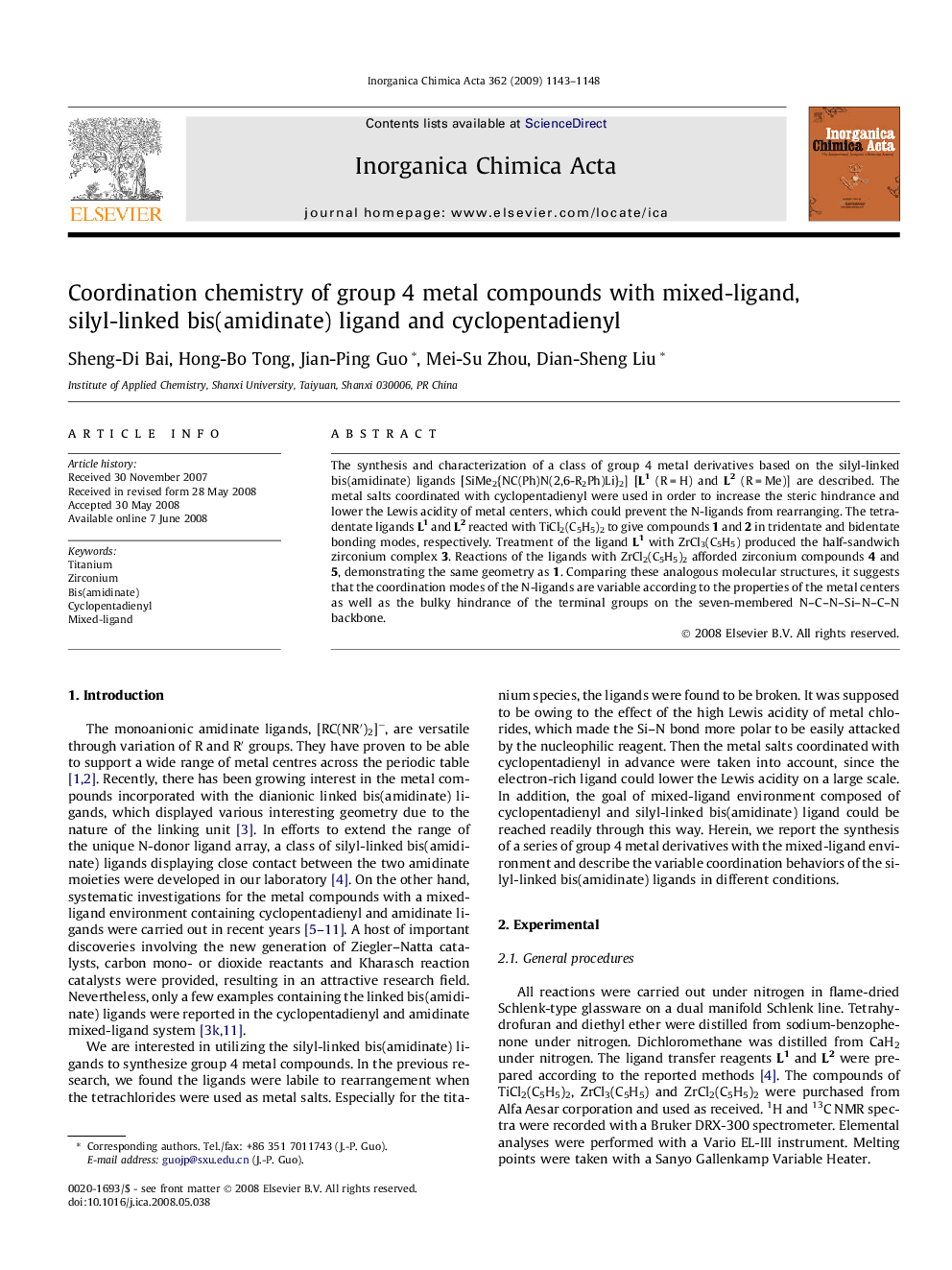| Article ID | Journal | Published Year | Pages | File Type |
|---|---|---|---|---|
| 1307045 | Inorganica Chimica Acta | 2009 | 6 Pages |
The synthesis and characterization of a class of group 4 metal derivatives based on the silyl-linked bis(amidinate) ligands [SiMe2{NC(Ph)N(2,6-R2Ph)Li}2] [L1 (R = H) and L2 (R = Me)] are described. The metal salts coordinated with cyclopentadienyl were used in order to increase the steric hindrance and lower the Lewis acidity of metal centers, which could prevent the N-ligands from rearranging. The tetradentate ligands L1 and L2 reacted with TiCl2(C5H5)2 to give compounds 1 and 2 in tridentate and bidentate bonding modes, respectively. Treatment of the ligand L1 with ZrCl3(C5H5) produced the half-sandwich zirconium complex 3. Reactions of the ligands with ZrCl2(C5H5)2 afforded zirconium compounds 4 and 5, demonstrating the same geometry as 1. Comparing these analogous molecular structures, it suggests that the coordination modes of the N-ligands are variable according to the properties of the metal centers as well as the bulky hindrance of the terminal groups on the seven-membered N–C–N–Si–N–C–N backbone.
Graphical abstractIn a class of group 4 metal compounds with the mixed-ligand environment, the tetradentate N-ligands, silyl-linked bis(amidinate) ligands, present the different bonding modes as variation of electronic and sterical properties of metal centers.Figure optionsDownload full-size imageDownload as PowerPoint slide
